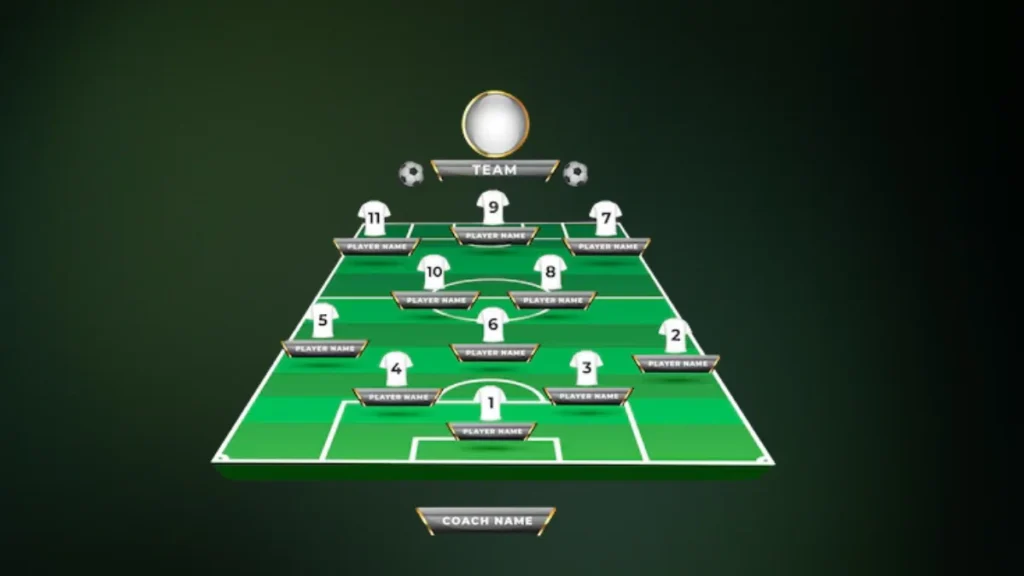# How Many People in Soccer Team: Decoding the Numbers and Key Insights
Soccer is arguably the world’s favorite team sport. But how many people in soccer team are actually involved in an official match? At first glance, the answer seems simple, but there are intriguing layers beneath the surface. Whether you are new to soccer, coaching, or simply curious, understanding the team composition helps unlock the rules, strategies, and common misinterpretations.
Let’s dive deep into this expert guide, combining official data, little-known facts, and practical advice. Here’s what we’ll cover:
– What is the Standard Number of Players in a Soccer Team?
– Key Roles and Position Breakdown
– Soccer Formats: Comparing 11-a-side, 7-a-side, and Futsal
– Substitutions and Squad Depth: What Are the Limits?
– Step-by-Step Guide: How to Set Up a Soccer Team
– Common Mistakes and Warnings
– Essential Checklist for Soccer Team Preparation

## What Is the Standard Number of Players in a Soccer Team?
The phrase “how many people in soccer team” is most commonly associated with the starting lineup required for a regulation match. According to FIFA, the universally recognized standard is:
– 11 players per team on the field at kickoff, including one goalkeeper. (Source: FIFA Laws of the Game)
But it doesn’t end there. Each team registers additional squad members for substitutions during the game. In professional tournaments, squad sizes typically range from 18 to 23 players, but only 11 are active simultaneously.
## Key Roles and Position Breakdown
A soccer team is not just a random collection of players. Each person has a specific role, which collectively creates the team’s shape, fluidity, and defensive-offensive balance.
Here’s a classic positional breakdown for an 11-player team:
– 1 Goalkeeper: The last line of defense; only player allowed to use hands within the penalty area.
– 4 Defenders: Usually two center-backs plus full-backs, tasked with protecting the goal.
– 3-4 Midfielders: The engine room, responsible for control, transition, and linking defense to attack.
– 2-3 Forwards: Lead the attack and take most of the scoring opportunities.
Depending on the coach’s strategy and formation, these numbers can flex slightly, but the total remains 11 at all times during regular play.
—
| Format | Players Per Team On Field | Substitutes Allowed | Main Use Case |
|---|---|---|---|
| Standard (11-a-side) | 11 | Typically 3-5 | Professional and amateur leagues |
| 7-a-side | 7 | Unlimited or up to 3 | Youth leagues, small pitches |
| Futsal (Indoor) | 5 | Unlimited rolling subs | Indoor skills development |
—
## Soccer Formats: Comparing 11-a-side, 7-a-side, and Futsal
While most top-level soccer uses the 11-a-side format, other versions are popular globally. For example, 7-a-side is great for youth development and space-limited settings. Futsal, played indoors, features five players per team, and uses unlimited substitutions. This variety helps tailor the game to any age, ability, or facility.
Interestingly, according to Statista, there are over 265 million active soccer players worldwide, playing in countless formats. (Source: Statista Global Sports Report)
## Substitutions and Squad Depth: Beyond the Starting 11
So, does “how many people in soccer team” just mean those on the pitch? Not quite. The total squad includes active players plus substitutes:
– Typical matchday squads have 18-23 players.
– In most professional tournaments: 3 to 5 substitutes allowed per game, depending on competition rules.
– In youth/amateur matches, unlimited substitutions may be possible.
Unforeseen events like injuries, red cards, or tactical shifts force managers to rely on their full squad depth. Our team, for example, once lost two starters early in a regional final and had to reshuffle the lineup quickly. That experience taught us the vital importance of every squad member’s readiness and versatility.
## Step-by-Step Guide: Setting Up Your Soccer Team
If you want to organize a soccer team—whether for a league, a school event, or pick-up games—follow this easy blueprint:
1. DEFINE YOUR FORMAT: Decide on 11-a-side, 7-a-side, or futsal depending on your group size and field availability.
2. RECRUIT PLAYERS: Gather enough people for starting lineup and recommended number of substitutes.
3. ASSIGN ROLES: Assign positions based on skill set (goalkeeper, defenders, midfielders, forwards).
4. REGISTER THE TEAM: Complete league registration, ensure every participant meets eligibility requirements.
5. CONDUCT PRACTICE: Schedule training to build unity, work on strategies, and familiarize everyone with their roles.
This sequence lays a proven foundation for competitive and recreational soccer alike.
## Common Mistakes and Important Warnings
Soccer teams often stumble over a few avoidable pitfalls. Here’s what you should watch out for:
– THE WRONG NUMBER OF PLAYERS: Failing to have the required number of players at kickoff results in forfeiture or delay.
– MISUNDERSTANDING SUBSTITUTION RULES: Different leagues have different substitution policies—always check them beforehand.
– NEGLECTING SQUAD DEPTH: Over-relying on a starting lineup can backfire during long seasons or tournaments.
Be sure to double-check regulations for your specific competition. As the International Football Association Board warns, any breach of player number or substitution rules can lead to disciplinary action. (Source: IFAB Laws of the Game)
## Essential Soccer Team Preparation Checklist
To ensure your soccer team is ready for action and avoids common mistakes, run through this clear preparation checklist:
1. Confirm exact number of active players for your format (11, 7, or 5).
2. Recruit required substitutes in case of injuries or tactical changes.
3. Assign and communicate each player’s position and role.
4. Review official competition rules for player numbers and substitution limits.
5. Register your team and finalize paperwork.
6. Plan and schedule regular practice sessions.
7. Prepare uniforms, equipment, and emergency kits.
8. Hold a final roster check one day before the game.
9. Reiterate discipline and fair play expectations.
Getting the right answer to “how many people in soccer team” is more than just counting heads. It’s about strategic preparation, team culture, and adapting to every match’s unique demands. By following these steps, you’ll set your soccer squad up for success—both on and off the field.


















